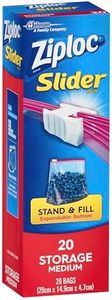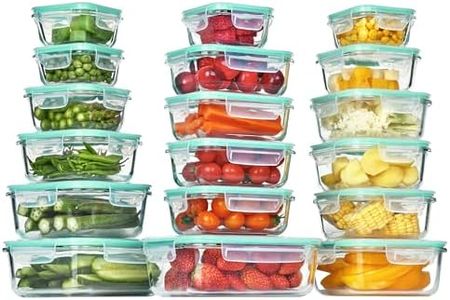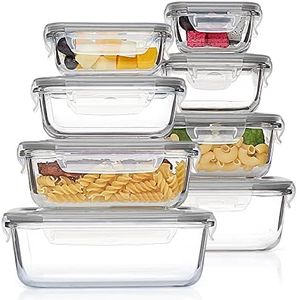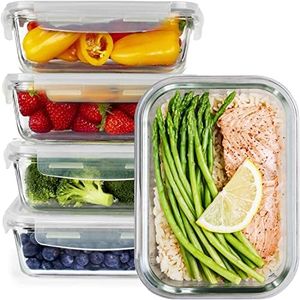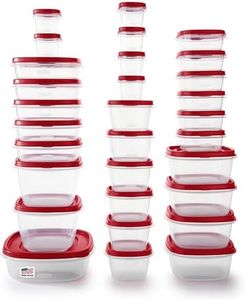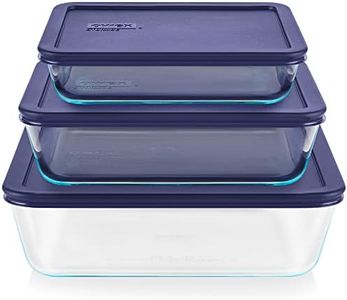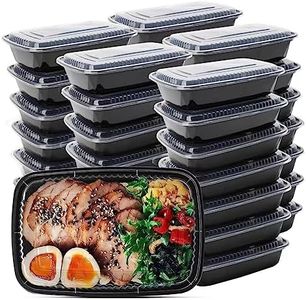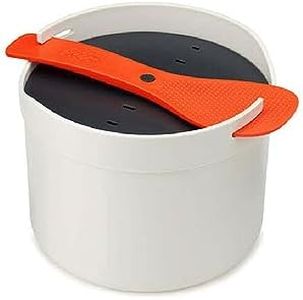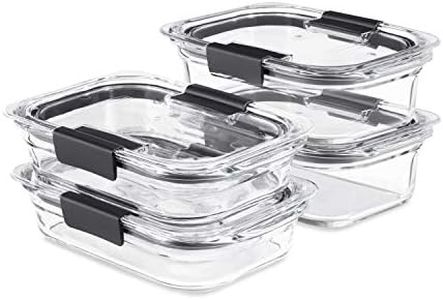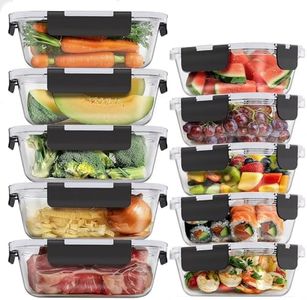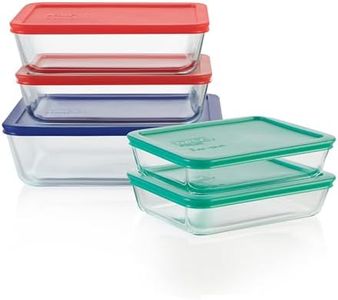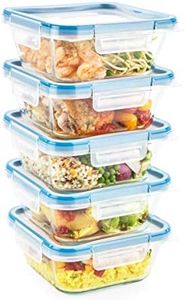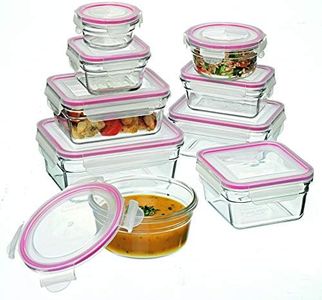We Use CookiesWe use cookies to enhance the security, performance,
functionality and for analytical and promotional activities. By continuing to browse this site you
are agreeing to our privacy policy
10 Best Microwave Containers
From leading brands and best sellers available on the web.By clicking on a link to a third party's website, log data is shared with that third party.
Buying Guide for the Best Microwave Containers
Choosing the right microwave container is important to ensure your food heats up safely and evenly, without causing damage to your microwave or leaching harmful substances into your meal. Because there are many types and materials available, it's helpful to learn about what makes a container suitable for microwave use and what features best fit your cooking and storage needs.MaterialThe material of a microwave container determines if it's safe to use and how it will perform. Common materials include plastic, glass, and ceramic. Glass and ceramic are typically safest, as they don’t react with food and can handle various temperatures, though they're heavier and can break. Plastics vary: some are microwave-safe, while others can warp or leak chemicals when heated. Always look for containers labeled as 'microwave-safe.' If you usually reheat a variety of foods, glass or ceramic may be your best option, but if you prioritize lightweight and portability, high-quality microwave-safe plastic can be more practical.
Seal and Lid DesignThe way a container seals with its lid affects both reheating and storage. Some lids are snap-on, some screw-on, and others have venting options. Containers with a tight seal help prevent leaks and keep food fresh, but when microwaving, a vent or loosely placed lid helps release steam to avoid pressure build-up. If you often store liquids or carry food on the go, look for containers with leakproof seals. For pure microwave use, a vented lid or one that can be placed loosely is best to avoid spills from steam pressure.
Size and ShapeThe size and shape of a microwave container influence how much food you can reheat and how evenly it warms. Shallow, wide containers generally heat food more evenly, while deep containers may leave cold spots in the middle. Sizes range from single-portion to family-style; pick a size based on your usual portion needs and available storage space in your fridge or cupboard. For lunch or small meals, go with compact sizes; for batch reheating, consider larger, wider shapes.
Stain and Odor ResistanceMicrowave containers, especially plastic ones, can absorb food colors and odors over time, making them less pleasant to use. Some materials, like high-quality glass or ceramic, naturally resist stains and odors, while specialized plastics might be more resistant depending on their finish and thickness. If you frequently reheat strongly flavored or colored foods, try to choose a container known for its resistance to staining and absorbing smells.
Ease of CleaningA container’s cleanability affects convenience and hygiene. Dishwasher-safe options save effort and get rid of most residue and odors, while some containers may require hand washing to avoid damage or warping. Consider how easy the container is to clean if you often reheat foods that can leave sticky or greasy residues, and check for any intricate shapes or lid designs that might trap food in hard-to-clean areas.
Stackability and StorageStackable containers and those with nesting shapes save space in your kitchen or lunch bag. Containers with flat lids and bodies can be stacked easily, while others with uneven shapes may be harder to store. If you have limited storage space or tend to use multiple containers at once, look for ones designed to stack or nest efficiently.
